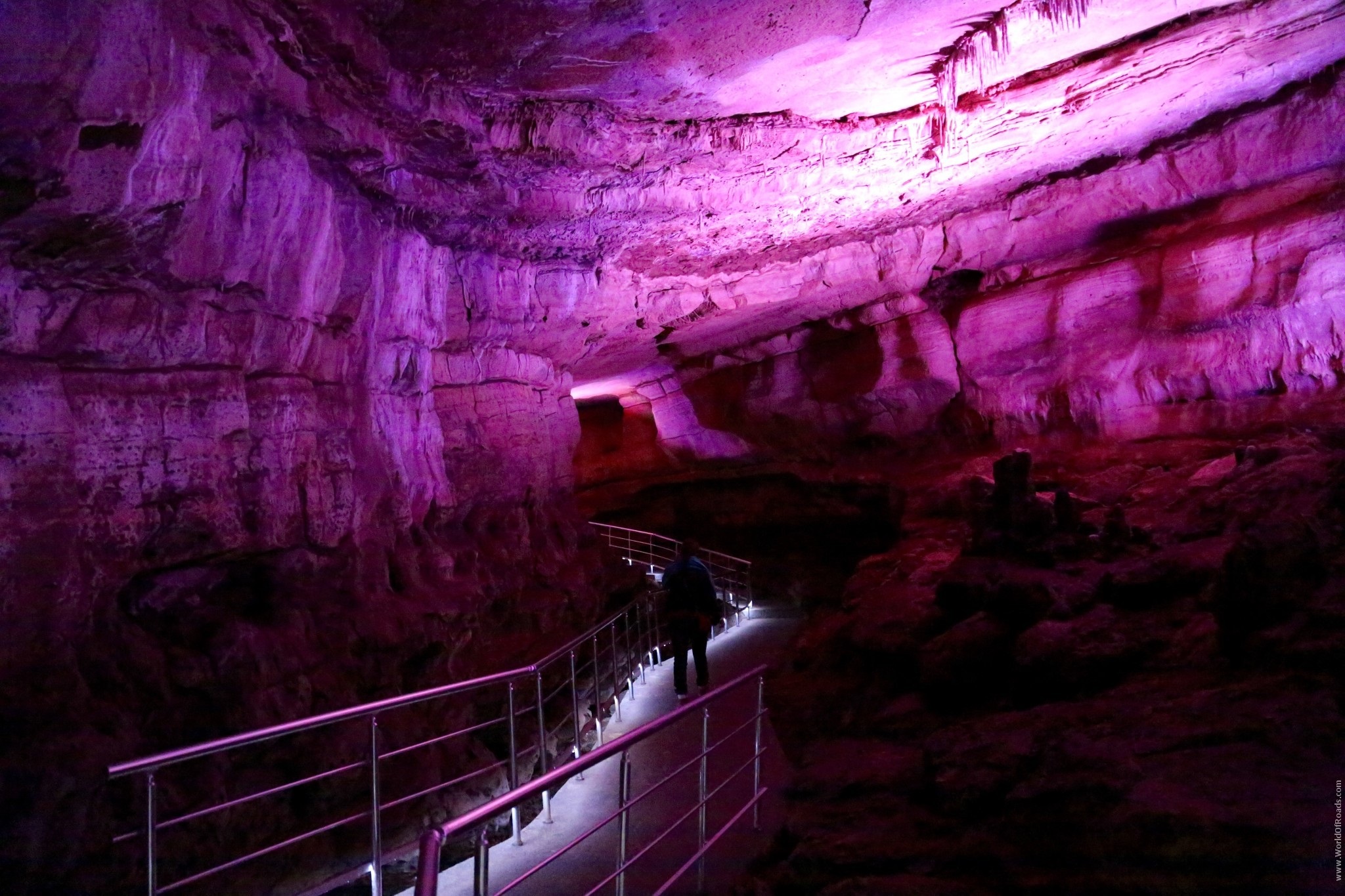Established in 1935 to protect the Sataplia Cave and dinosaur footprints found in the area, this small reserve 9 km from Kutaisi was renovated some six years ago. The first stage of the tour sees an enclosed space and a clamber up a staircase with smooth limestone rock below, the three-toed footprints of some 7 species of “Sataplasaurus” dinosaurs left in the rock dated to the Cretaceous Period (165-65 million years ago) clear to see. Then we’re out into the woods, past a few fibreglass mini replica dinosaurs (the kids enjoyed everything except the fact they could look, not touch and one of the dinosaurs had a nose missing!) and into the short but beautiful caves- a well-lit, sturdy 314 meter-long pathway and beautiful rock formations, including the bulbous “heart” rock in the center. Back outside there is a nice narrow pathway past golden cliffs and woods below- in these very rocks the honey bees used to live (Sataplia means “For Honey,” which the locals used to harvest). The bees moved on long ago. Another gem, if you have the legs, is to walk to the glass walkway which juts out over the edge of the highest point and offers a fabulous view of the valley. The walkway was built during the time of the previous government, as was the glass wedding house above it. Both have fallen into a state of “unlove”- with the slippers meant to prevent the glass from being scratched often not present and the wedding house closed and dusty. The guide was friendly but impatient to finish the tour and the slower members of the large group we were part of (elderly, overweight and children) often missed the few descriptive moments of the tour. There was a simple but interesting museum halfway through- with a dinosaur skeleton and black and white photos of those who originally discovered the dinosaur footprints.
WHERE: 5km from Kutaisi. Take minibus 45 from Javakhishvili Str., Kutaisi
TICKET: 6 GEL
OPEN: Wed-Mon 10am-6pm, earlier closing in autumn and winter

